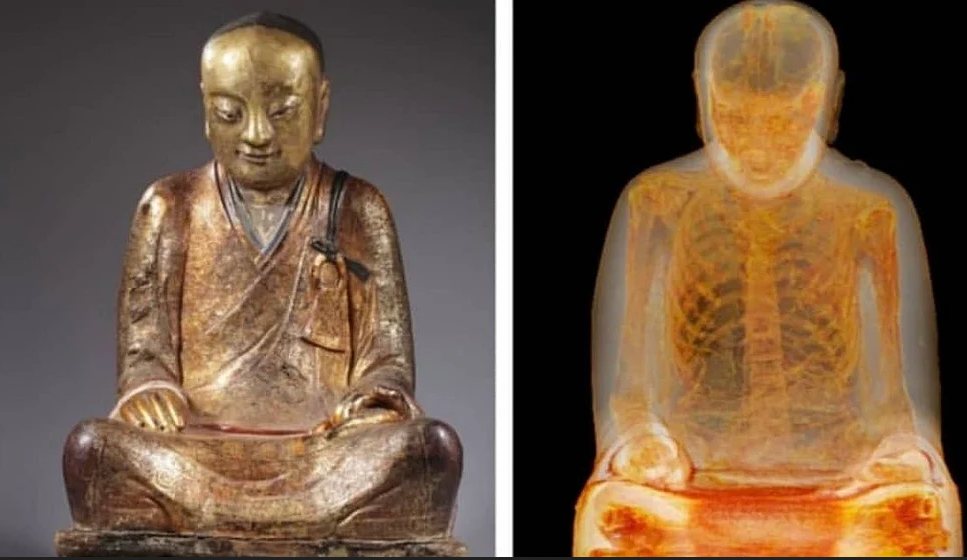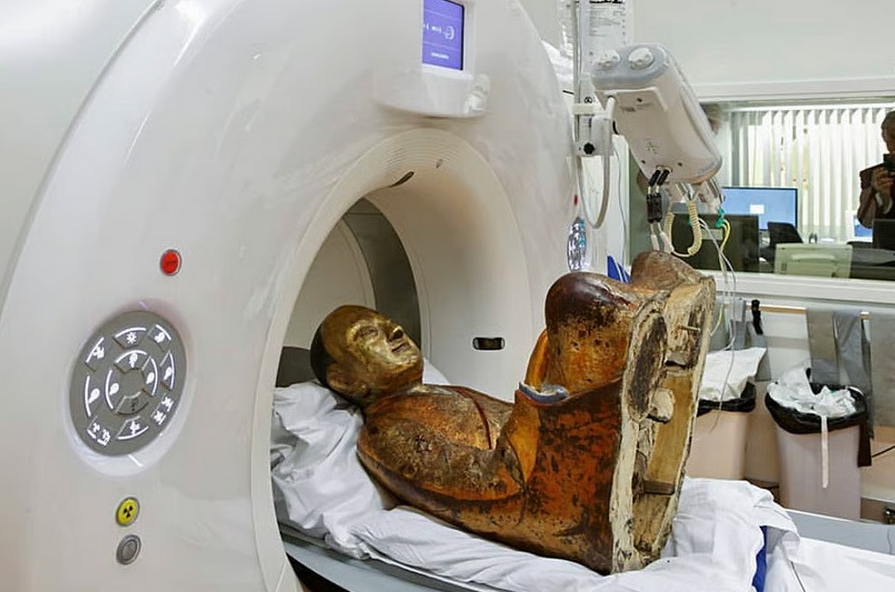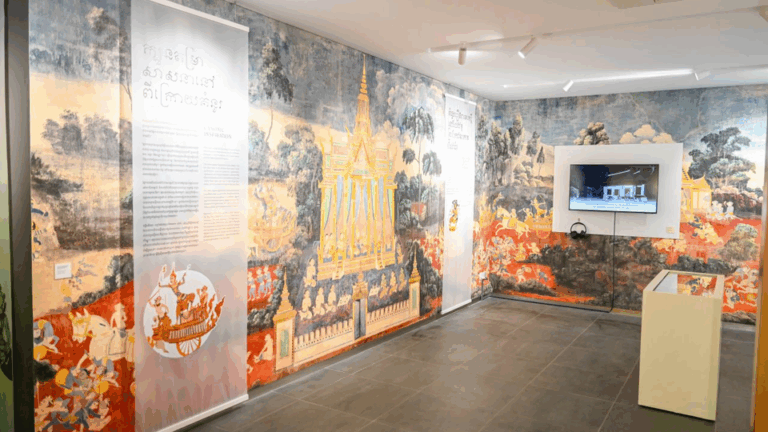
A 1,000-year-old Buddha statue containing the mummified remains of the monk Liuquan has become the focus of a complex saga involving theft, spiritual heritage, and international law. Originally enshrined in Puzhao Temple in Fujian, China, the statue—known as Zhanggong Zushi—was stolen in 1995 and resurfaced in Europe a year later, acquired by Dutch art collector Oscar van Overeem. He claimed to have purchased it legally in Amsterdam, though no documentation was provided.

In 2014, the statue was loaned to the Drents Museum in the Netherlands for a “Mummy World” exhibition. A CT scan revealed a stunning secret: the preserved body of Liuquan, seated in lotus position, with his organs replaced by paper inscribed with Chinese characters. Experts believe Liuquan underwent a decade-long self-mummification ritual, involving a strict diet and meditation in a sealed chamber, aiming to become a “living Buddha.”
The discovery sparked outrage in China, especially among villagers from Yangchun and Dongpu, who had venerated the statue for centuries. Legal efforts to reclaim the relic began in 2015, but a Dutch court dismissed the case in 2018. However, in 2020, the Sanming Intermediate People’s Court in China ruled in favor of the villages, ordering the statue’s return within 30 days. The ruling was hailed as a landmark for cultural restitution under international conventions.
Despite the court order, van Overeem claimed he no longer possessed the statue, having allegedly traded it to a Chinese businessman. Its current whereabouts remain unknown, deepening the mystery and frustration surrounding the case.
Beyond the legal battle, the statue offers rare insight into ancient Buddhist mortuary practices and the spiritual significance of self-mummification. Researchers hope DNA analysis of Liuquan’s remains will shed light on his origins and the ritual that preserved him. The Zhanggong Zushi statue stands as a symbol of contested memory, cultural reverence, and the enduring struggle to protect sacred heritage across borders.




